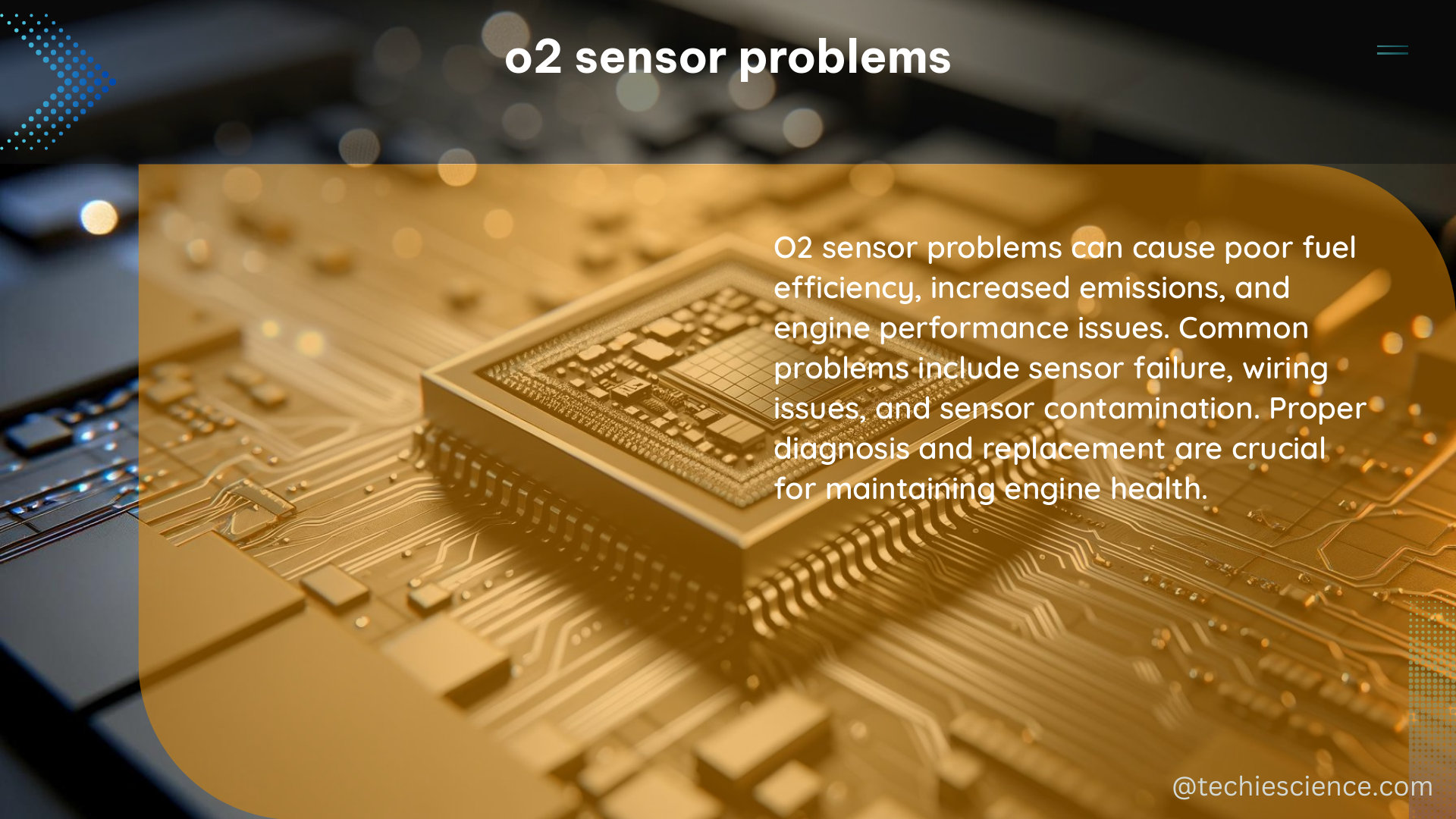O2 sensor problems can significantly impact an engine’s performance and emissions, leading to a range of issues such as poor fuel economy, rough idling, misfiring, and sluggish acceleration. Understanding the common causes, symptoms, and diagnostic techniques is crucial for effectively addressing these problems.
Understanding O2 Sensor Function and Failure Modes
The oxygen (O2) sensor is a critical component in the engine’s fuel management system, responsible for monitoring the air-fuel ratio and providing feedback to the engine control unit (ECU). When an O2 sensor fails, it can cause the ECU to make incorrect adjustments, leading to a rich or lean fuel condition.
Some common failure modes of O2 sensors include:
-
Stuck Sensor: An O2 sensor that reads a constant value, indicating a stuck or failed sensor. For example, an O2b1s2 sensor on a 1997 Mercury Tracer should have a voltage range between 0 and 1 volt, with frequent switching between high and low values during warm-up. If the sensor maxes out at 0.015 volts, it is likely faulty.
-
Slow Response: An O2 sensor that takes too long to respond to changes in the air-fuel ratio, which can be caused by sensor contamination or deterioration.
-
Heater Circuit Failure: The O2 sensor’s heater circuit can fail, preventing the sensor from reaching its optimal operating temperature, which is crucial for accurate readings.
-
Sensor Deterioration: Over time, O2 sensors can deteriorate due to exposure to high temperatures, exhaust gases, and other environmental factors, leading to inaccurate readings.
Diagnosing O2 Sensor Problems

To diagnose O2 sensor issues, follow these steps:
-
Read Fault Codes: Use a diagnostic tool to read any trouble codes related to the O2 sensor, such as P0135 (oxygen sensor in front of the catalytic converter 1, heating circuit/open), P0175 (system too rich, bank 2), P0713 (fuel trim malfunction, bank 2), and P0171 (system too lean, bank 1).
-
Check Sensor Resistance: Measure the resistance of the O2 sensor’s heater circuit to ensure it is within the manufacturer’s specifications.
-
Inspect Power Supply: Verify that the O2 sensor is receiving the correct voltage and ground from the ECU.
-
Examine Electrical Connector: Check the O2 sensor’s electrical connector for any signs of damage, corrosion, or loose connections.
-
Inspect for Leaks: Examine the exhaust manifold and fuel injectors for any leaks that could affect the O2 sensor readings.
-
Confirm O2 Values: Use a four or five-gas emission analyzer to confirm the O2 sensor’s voltage values and ensure they are within the expected range.
-
Use an Oscilloscope: An oscilloscope can be used to check the O2 sensor’s signal and ensure it is switching between high and low values as expected.
Resolving O2 Sensor Problems
Once the root cause of the O2 sensor problem has been identified, the appropriate solution can be implemented:
-
Replace the O2 Sensor: If the sensor is faulty, replace it with a new one that meets the manufacturer’s specifications.
-
Address Heater Circuit Issues: If the heater circuit is the problem, check for any wiring issues or replace the sensor if the heater is not functioning properly.
-
Repair Exhaust or Fuel System Leaks: If leaks in the exhaust manifold or fuel injectors are affecting the O2 sensor readings, address these issues to ensure accurate sensor operation.
-
Perform Regular Maintenance: Regular maintenance, such as replacing the O2 sensor at the recommended intervals, can help prevent future problems and ensure optimal engine performance.
Conclusion
O2 sensor problems can have a significant impact on an engine’s performance and emissions. By understanding the common failure modes, following a systematic diagnostic process, and implementing the appropriate solutions, you can effectively address these issues and maintain your vehicle’s optimal operation.
References:
- Need help reading live data o2 sensor – FEOA Forums
- Oxygen sensor failure and replacement tips – Delphi Technologies
- Using O2 Sensor Data in Diagnostics – YouTube

The lambdageeks.com Core SME Team is a group of experienced subject matter experts from diverse scientific and technical fields including Physics, Chemistry, Technology,Electronics & Electrical Engineering, Automotive, Mechanical Engineering. Our team collaborates to create high-quality, well-researched articles on a wide range of science and technology topics for the lambdageeks.com website.
All Our Senior SME are having more than 7 Years of experience in the respective fields . They are either Working Industry Professionals or assocaited With different Universities. Refer Our Authors Page to get to know About our Core SMEs.